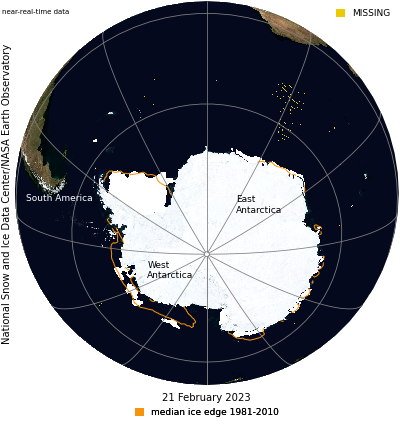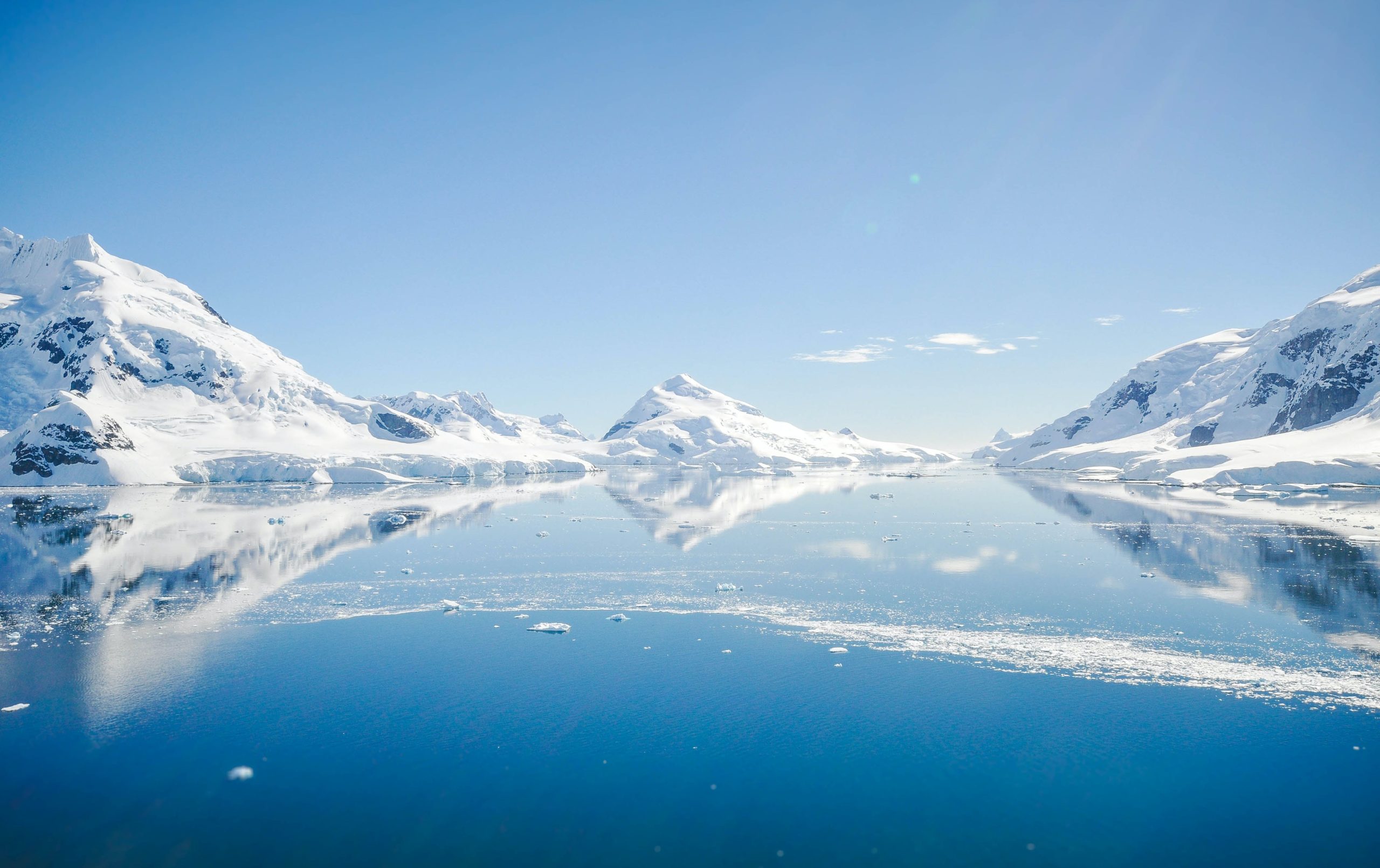Antarctic sea ice has likely reached its minimum extent for the year, at 1.79 million square kilometers (691,000 square miles) on February 21, 2023, according to scientists at the National Snow and Ice Data Center (NSIDC) at the University of Colorado Boulder. The 2023 minimum is the lowest in the 45-year satellite record. This year’s minimum extent beat the previous record low set in 2022 by 136,000 square kilometers (52,500 square miles).

This NASA Blue Marble image shows Antarctic sea ice on February 21, 2023, when sea ice reached its minimum extent for the year. Sea ice extent for February 21 averaged 1.79 million square kilometers (691,000 square miles)—hitting a record low in the 45-year satellite record. — Credit: NSIDC/NASA Earth Observatory
“Antarctica’s response to climate change has been different from the Arctic’s,” said Ted Scambos, senior research scientist at the Cooperative Institute for Research in the Environmental Sciences (CIRES) and a contributor to NSIDC’s Arctic Sea Ice News and Analysis page. “The downward trend in sea ice may be a signal that global warming is finally affecting the floating ice around Antarctica, but it will take several more years to be confident of it. Lower sea ice extent means that ocean waves will pound the coast of the giant ice sheet, further reducing ice shelves around Antarctica.” NSIDC senior research scientist and University of Manitoba professor Julienne Stroeve added, “The sea ice helps to buffer large floating ice shelves and major outlet glaciers such as Pine Island and Thwaites, and if these glaciers begin a more rapid runaway loss of land ice, it could trigger a dramatic increase in sea level rise rates before the end of this century.”
NSIDC scientists stress that the Antarctic sea ice extent number is preliminary—continued melt conditions could still push the ice extent lower. NSIDC will issue a formal announcement at the beginning of March with full analysis of the possible causes behind this year’s ice conditions, interesting aspects of the melt season, the setup going into the winter growth season ahead, and graphics comparing this year to the long-term record.
Source: National Snow and Ice Data Center














